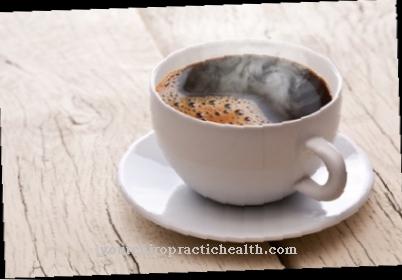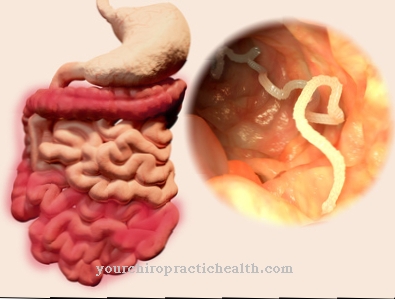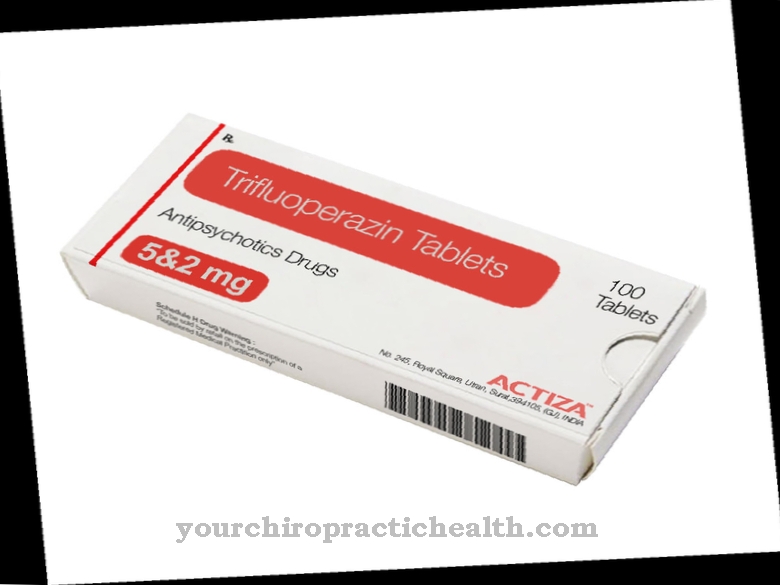Griseofulvin is an antimycotic which is used against infections of the skin with dermatophytes (thread fungi). It is a fungal toxin formed by the mold Penicillium griseofulvum.
What is griseofulvin?

Griseofulvin is a chemical agent of the mold Penicillium griseofulvum. As a fungal poison, it has an antibiotic effect against filamentous fungi that mainly affect the skin and its appendages, such as. B. fingernails and toenails affected.
However, griseofulvin is against other fungi, u. a. against mold, ineffective. Chemically, it is a benzofuran derivative that can be administered both orally and locally. It is, so to speak, a poison produced by mold, which in turn acts against other types of fungus.
Research has also shown that griseofulvin can also fight cancer cells by preventing their cells from dividing. This property has no medical significance. Currently, griseofulvin is used exclusively as an antifungal agent against dermatophytes.
Pharmacological effect
How the Griseofulvin is due to its influence on cell division. It inhibits mitosis (cell division) and thus causes the corresponding cells to die off without subsequent cell lines being able to develop.
Griseofulvin binds to the intracellular protein tubulin, which is a basic building block of microtubules. These microtubules, in turn, are components of the spindle fibers that are responsible for cell mitosis. However, if griseofulvin binds to tubulins, these can no longer be used to build up the microtubules. Ultimately, the formation of the spindle fibers necessary for cell division is hindered, with mitosis and the intracellular transport of substances being inhibited.
The reason why griseofulvin mainly fights filamentous fungi that have attacked the skin is that the active ingredient is firmly bound to the keratin of the skin after ingestion. Its removal there is only possible again through the exfoliation of dead skin cells.
For energetic reasons, the griseofulvin-keratin complexes migrate selectively into these cells in the presence of dermatophytes and disrupt their cell division. The same mechanism of action also causes the observed inhibitory influence of griseofulvin on the cell division of cancer cells.
Medical application & use
Griseofulvin is now mainly used to treat children with tinea corporis and tinea capitis. Griseofulvin is the only drug approved for therapy in Germany.
It is seldom used in the treatment of onychomycosis (nail fungus) because there are better effective drugs available. Tinea corporis, also called ringworm, is a fungal disease of the trunk and extremities that does not involve the hands, feet or groin. This condition causes ring-shaped, circular redness with flaking and itchy skin. Several types of dermatophytes can cause these symptoms to develop.
The treatment is carried out with ointments containing griseofulvin, which are applied locally. Tinea capitis, on the other hand, is a dermatophytosis, which is characterized by the infestation of the hairy scalp with dermatophytes, especially in adolescents during puberty. There is circular hair loss with flaky changes. The treatment is carried out by local and systemic application of drugs containing griseofulvin.
The duration of therapy can be up to three months. Other skin mycoses, such as B. the athlete's foot are u. a. treated with griseofulvin. The treatment of onychomycosis (nail fungus) was also often done with griseofulvin in the past. Today, griseofulvin is used less often here, along with other active ingredients.
Risks & side effects
Even when using Griseofulvin side effects can occur. It should always be noted that there are people who are sensitive to certain active ingredients. In this case, the use of griseofulvin is of course contraindicated.
Otherwise gastrointestinal disorders and skin changes have been observed at times. In rare cases, neurological problems and changes in the blood count can occur. Griseofulvin is contraindicated for liver dysfunction, collagenosis or blood diseases such as porphyria.
Furthermore, the effect of certain drugs is reduced, such as. B. with the pill or with anticoagulants. Since griseofulvin affects cytochrome P 450, the use of further medication must be agreed with the doctor. Adverse effects of griseofulvin with other medicinal products can lead to headache, tiredness, nausea, vomiting, diarrhea, allergies or sensitivity disorders.













.jpg)

.jpg)
.jpg)











.jpg)